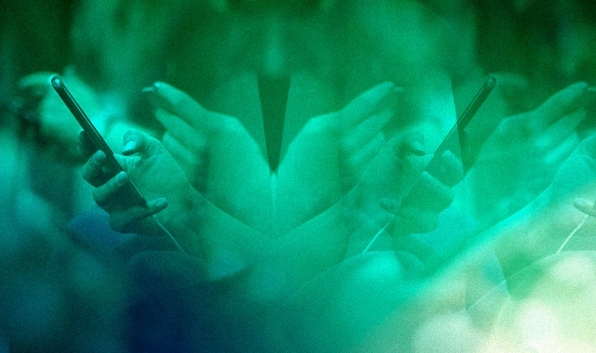There’s a lot of collective hand-wringing about how much time teens spend on their phones–including from teens themselves. A new report from the Pew Research Center shows that 54% of today’s teenagers think they spend too many hours gazing into their screens.
But the teens aren’t alone–at least according to Pew’s survey of 743 teenagers and 1,058 parents of teenagers during March 2018. 36% of parents also felt like they spent too much time with their cellphone, and 51% of teens think that their parents either always or sometimes are distracted by their phones during in-person conversations (72% of parents feel the same way about their kids). In other words, teens aren’t the only culprit here: Kids and adults alike are worried about how much time we–and our family members–are spending staring at our phones.

Amongst teens, Pew found that 72% either always or sometimes look at their phones right after they wake up, and that their attachment doesn’t reduce during the day: 56% of those surveyed said they felt either anxious, lonely, or upset if they didn’t have their phone with them. That’s a lot of angst about screen-time, both from teenagers who are struggling to navigate their adolescence and from parents trying to help their kids while managing their own struggles against the lure of the phone. But at least there’s self-awareness of the problem: Pew reports that 52% of teens actively tried to reduce the amount of time they spent on their phones.
Pew’s study is an indication that teens and their parents have trouble limiting phone time. That’s by design: Pinging notifications and manipulative UX tactics deliver dopamine hits that keep us hooked in. And while there are tactics to help you manage your digital life, these have not yet reached cultural ubiquity, like well-practiced guidelines around how much coffee or wine you should drink to stay healthy.

But there are ways to reimagine the way we interact with our phones so our experience isn’t completely dictated by notifications. It would be easy enough for Apple to make its “Do Not Disturb” feature the default, instead of requiring you to turn it on–and for tech companies to prioritize user experience by giving people more control over the way their use their devices. Some advocate for turning your phone’s colors off entirely, so you’re less distracted by app’s attention-grabbing colors and those red notification circles. Others believe in “digital minimalism”–paring down what digital services you use to those that actually add value to your life and don’t make you feel bad about yourself.
For now, it’s going to take a combination of self-awareness and practical defense to help cut down on needless screen time among both teens and parents. But for any real, long-term change, we need thoughtful design that is dedicated to keeping our digital lives balanced and healthy instead of manipulating us into a constant state of anxiety.
(33)